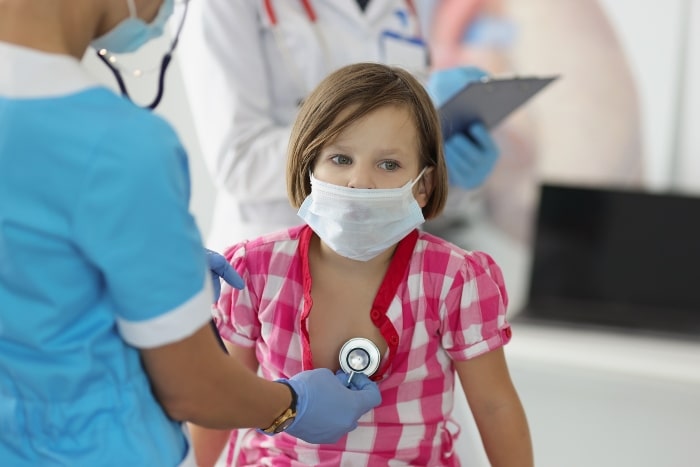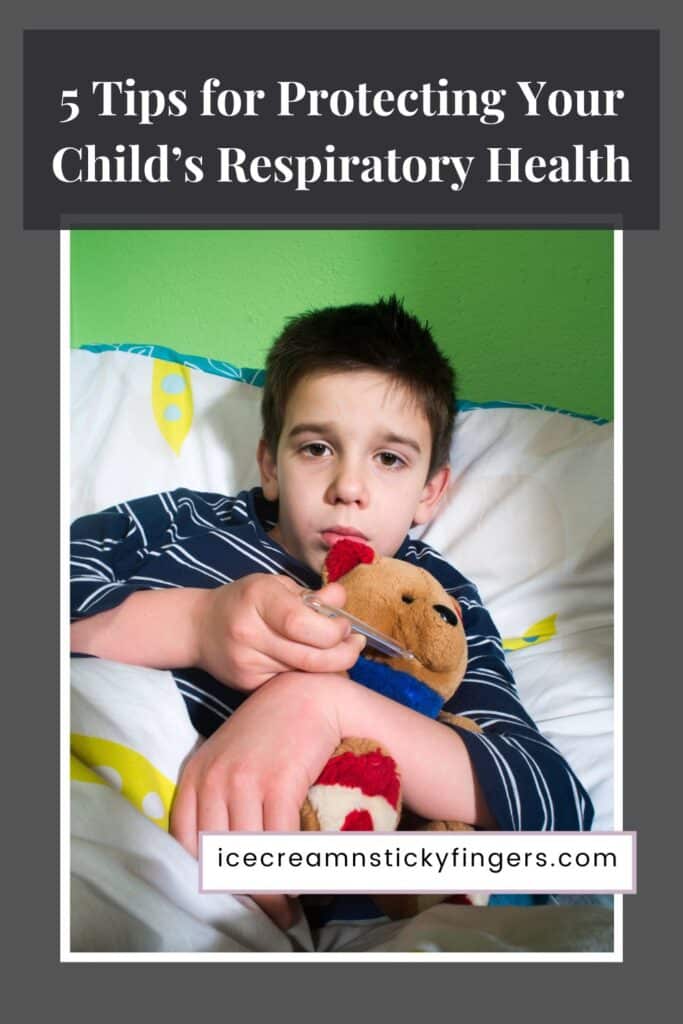Your child’s respiratory health is vital to their overall well-being. With respiratory conditions on the rise among children, taking proactive steps to create a healthy environment becomes increasingly important. These 5 tips for protecting your childs respiratory health are straightforward, practical, and easy to implement.

Keep Your Home Clean and Dust-Free
Dust and allergens are common triggers for respiratory problems. Regularly cleaning your home can minimize these irritants. Vacuum carpets and rugs often harbor contaminants, especially if you have pets. Using a vacuum cleaner with a HEPA filter is a great way to trap even the smallest particles. Don’t forget to wipe down surfaces and wash bedding weekly. If possible, use air purifiers (aff link) to further reduce the presence of airborne allergens.
Ensure Proper Ventilation in Your Home
Good airflow is crucial for maintaining healthy indoor air quality. Open windows whenever possible to refresh the air inside your home. However, be mindful during allergy season or times of high outdoor pollution. Bathroom and kitchen exhaust fans can be very effective in removing moisture and reducing the buildup of harmful particles, so make sure to use them regularly.

Encourage Regular Outdoor Activities
Fresh air and physical exercise can strengthen your child’s lungs. Take your child to parks, nature trails, or safe outdoor areas where they can run around and stay active. Avoid outdoor play in areas with high levels of pollution, such as near busy roads, and check local air quality reports before planning outdoor activities.
Limit Exposure to Indoor Pollutants
Common household pollutants like smoke, strong cleaning chemicals, and mold can impact respiratory health. Make your home smoke-free and opt for non-toxic cleaning products when possible. Mold thrives in damp areas, so keep humidity levels in check and address water leaks promptly. Schools also play a role in respiratory well-being, so ask school administrators about indoor air pollutants. For example, radon is a naturally occurring gas that can seep into buildings and harm respiratory health if not addressed. In response to this risk, radon mitigation should be a priority in schools.
Stay Alert for Signs of Respiratory Issues
Recognizing symptoms of respiratory issues early can make a difference. Watch for frequent coughing, wheezing, or shortness of breath. If your child often complains about tightness in their chest, don’t hesitate to seek medical advice. Regular check-ups with a pediatrician can help catch potential issues before they worsen.
Keeping your family informed about respiratory health empowers you to protect everyone’s well-being. By following these 5 tips for protecting your childs respiratory health, you can create a safe and nurturing environment to help them breathe easier. Your child’s health deserves your attention today, so take these steps to ensure their bright, healthy future.







